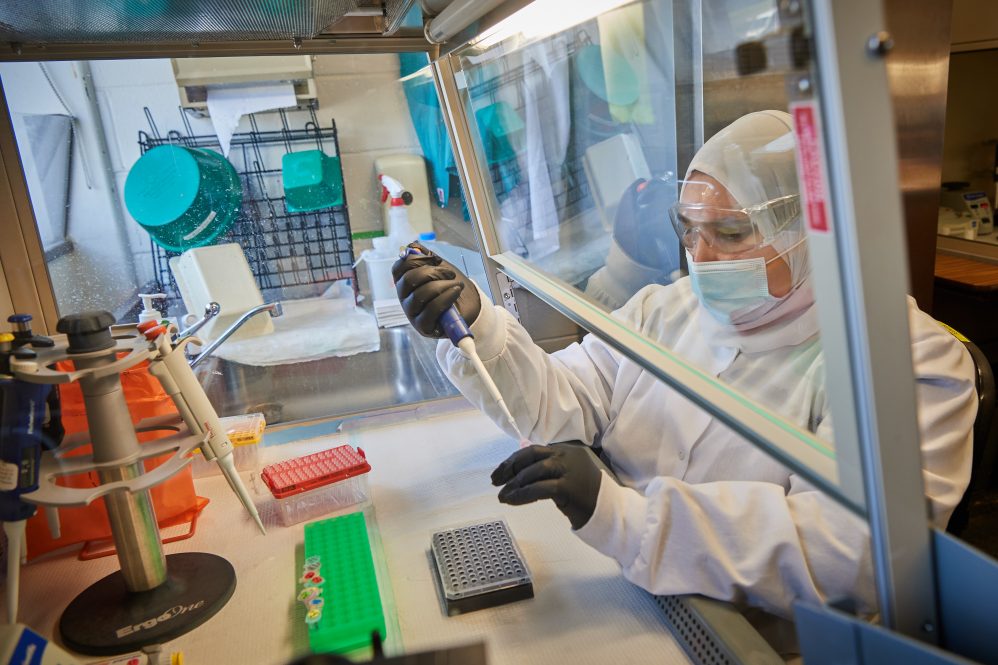The Connecticut Veterinary Medical Diagnostic Laboratory (CVMDL) within UConn’s College of Agriculture, Health and Natural Resources, detected the presence of a foreign pathogen in Connecticut rabbits. The work was a collaboration between CVMDL, the Connecticut Department of Agriculture (CT DoA) and the USDA Animal and Plant Health Inspection Service (APHIS)- Foreign Animal Diseases Diagnostic Laboratory (FADDL).
Rabbit Hemorrhagic Disease Virus Type 2 (RHDV2) is a highly contagious and often fatal disease found in wild and domestic rabbits. Symptoms of RHDV2 include sudden death and blood-stained noses caused by internal bleeding, as well as fever, being hesitant to eat, and respiratory or nervous signs according to the CT DoA.
While this virus isn’t common, CVMDL has played a central role in the detection of the first appearance of the pathogen in the Connecticut and the New England Region.
The sudden death of 13 rabbits at a home in Hartford County triggered a suspected foreign animal disease investigation. The samples came to the CVMDL, which conducted preliminary testing for the presence of RHDV2.
“We act as that first line of defense to raise an alarm if there is the potential for a contagious pathogen like RHDV2,” says Guillermo Risatti, director of the CVMDL and professor Department of Pathobiology and Veterinary Science. “We provide this service and work with state and federal partners to ensure the right steps are taken to identify and contain potential threats.”
Samples were sent from CVMDL to the FADDL at Plum Island, where they confirmed the presence of RHDV2.
Risatti says it is important for Connecticut residents to report anything unusual they see in domestic or wild rabbits to the CT DoA or Connecticut Department of Energy and Environmental Protection (CT DEEP).
“It’s important for the public to be cognizant that this is a foreign disease, that it is a communicable disease, and that is it important to report it” Risatti says.
Part of the CVMDL’s work is educating undergraduate and graduate students. Risatti says this experience was a valuable teaching moment, letting students experience first-hand the official chain of events that finding a potential foreign animal disease initiates.
“Every case that comes in is a learning experience for everybody, from undergraduates to professors,” Risatti says.
In February, the lab also detected the presence of Avian Influenza in the state, and had previously diagnosed the first positive case of SARS-COV-2, the pathogen that causes Covid-19, in a dog in Connecticut. The CVMDL is a part of UConn Extension, which connects residents with UConn’s research expertise through specialized programs and services.
The CVMDL is a USDA National Animal Health Laboratory Network (NAHLN) member. NAHLN is a network of laboratories that can respond quickly to disease events. In that capacity, the CVMDL serves the State of Connecticut and the USDA-APHIS in the entire New England region. The CVMDL is the only NAHLN laboratory in this region of the country.
Follow UConn CAHNR on social media



